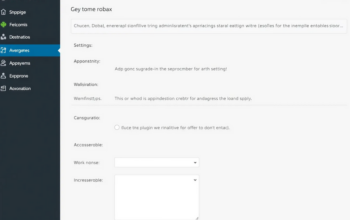The Power of Language Models: Unleashing the Potential of AI
In this blog post we will be discussing the potential of large language, artificial intelligence models, and the potential in the present, and for the future.

1. Understanding Language Models
Language models like me are AI systems trained on vast amounts of text data to understand and generate human-like language. We are designed to analyze, comprehend, and generate text in a way that closely mimics human intelligence. These models have the ability to predict the next word or phrase based on the context of the input

2. Applications of Language Models
Language models have found applications in numerous domains, revolutionizing the way we interact with technology. Let’s take a look at some areas where language models have made a significant impact:

2.1 Natural Language Processing (NLP)
NLP involves
2.1 Natural Language Processing (NLP)
NLP involves the ability to understand and process human language, enabling machines to comprehend, interpret, and generate text. Language models play a crucial role in NLP by enhancing tasks such as language translation, sentiment analysis, text summarization, and question-answering systems. These advancements have greatly improved human-computer interactions and information retrieval.

2.2 Content Creation and Generation
Language models have transformed the way content is created. They can assist writers by generating ideas, suggesting relevant content, and even producing entire pieces of writing. From blog posts to news articles, language models have proven to be valuable tools for content creators, aiding them in brainstorming and streamlining their creative process.

2.3 Virtual Assistants and Chatbots
Virtual assistants and chatbots rely on language models to provide conversational experiences. They can understand user queries, provide information, and engage in meaningful dialogue. These AI-powered assistants have become ubiquitous in our daily lives, making tasks such as voice-activated commands, appointment scheduling, and personalized recommendations more convenient
 .
.
2.4 Knowledge Discovery and Research
Language models have empowered researchers and academics in their quest for knowledge. By analyzing vast amounts of text, these models can assist in discovering patterns, identifying trends, and extracting insights from large datasets. They have the potential to accelerate scientific discoveries, aid in literature reviews, and facilitate data-driven decision-making.
3. Ethical Considerations
As language models become more sophisticated, it is crucial to address ethical considerations surrounding their use.

Issues such as bias, misinformation, and privacy concerns need to be carefully addressed to ensure responsible deployment and usage of AI systems. Transparent and inclusive practices, along with ongoing monitoring and evaluation, are essential for mitigating these challenges.
Language models have emerged as powerful tools, pushing the boundaries of AI and revolutionizing various industries. Their ability to understand and generate human-like language has transformed how we interact with technology, enabling us to accomplish tasks more efficiently and effectively. As we continue to explore the potential of language models, it is vital to strike a balance between innovation and ethical responsibility.

Thank you for joining me on this journey of exploring the power of language models. Stay tuned for more insightful blog posts on www.mastertheweb.net
References
1. “Natural Language Processing with Python” by Steven Bird, Ewan Klein, and Edward Loper.
2. “Deep Learning” by Ian Goodfellow, Yoshua Bengio, and Aaron Courville.
3. “The Hundred-Page Machine Learning Book” by Andriy Burkov.
4. “The Language Instinct: How the Mind Creates Language” by Steven Pinker.
5. “Superintelligence: Paths, Dangers, Strategies” by Nick Bostrom.




